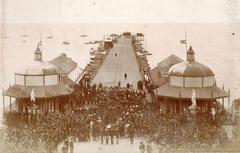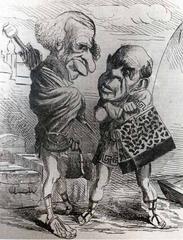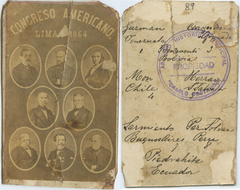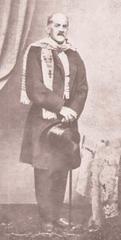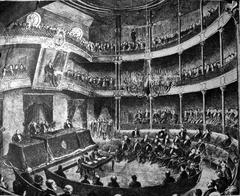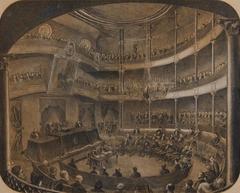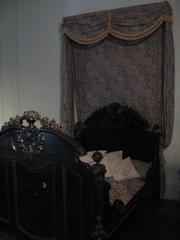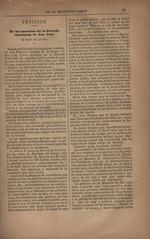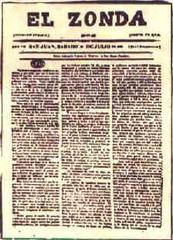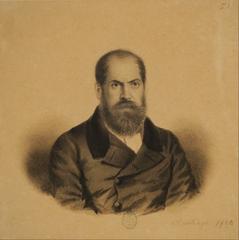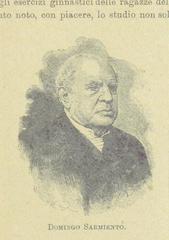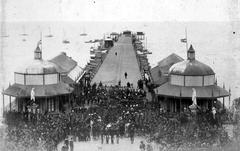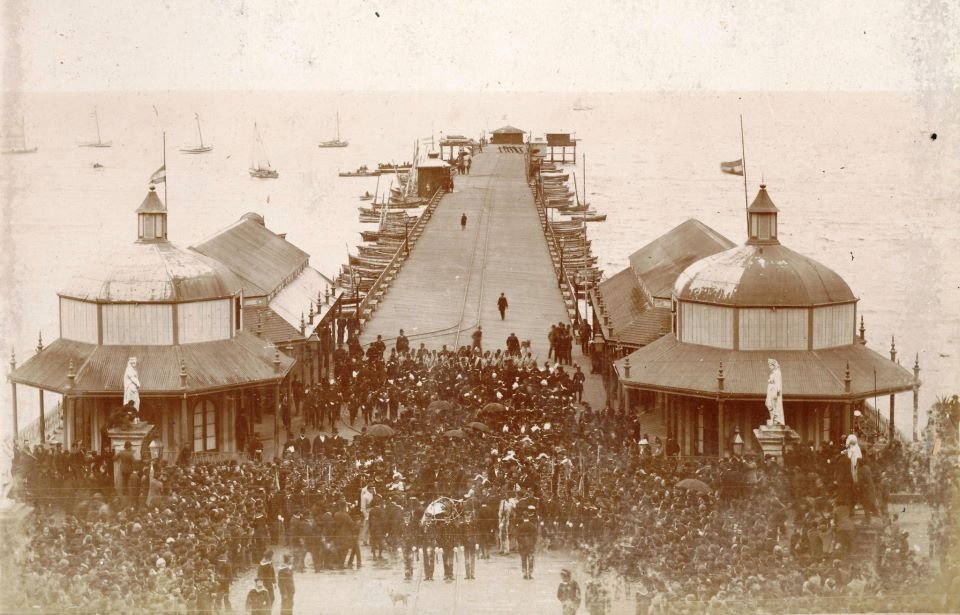
Domingo Faustino Sarmiento Sites in Buenos Aires: Visiting Hours, Tickets, and History
Date: 14/06/2025
Introduction: Sarmiento’s Enduring Legacy in Buenos Aires
Domingo Faustino Sarmiento is a central figure in Argentine history, renowned for his transformative impact on education, literature, and national modernization. Born in 1811 in San Juan, Argentina, Sarmiento’s lifelong dedication to public education and civic responsibility shaped the nation’s identity, earning him the title of the “Father of the Classroom.” His legacy is especially prominent in Buenos Aires, where a variety of museums, memorials, and cultural sites celebrate his life’s achievements (Casa Rosada; Britannica).
For visitors eager to engage with Sarmiento’s legacy, Buenos Aires offers a rich array of historical locations—ranging from his remarkable tomb in Recoleta Cemetery to the Sarmiento Historical Museum and the ARA Presidente Sarmiento Museum Ship. This guide provides comprehensive details on these sites, including visiting hours, ticket information, accessibility, and travel tips, ensuring you make the most of your historical journey through the city (turismo.buenosaires.gob.ar).
Table of Contents
- Early Life and Formative Years
- Exile, Literary Work, and Political Awakening
- Educational Reforms and National Impact
- Presidency and Modernization
- Key Sarmiento Sites in Buenos Aires
- Recoleta Cemetery: Sarmiento’s Tomb
- Sarmiento Historical Museum (Museo Histórico Sarmiento)
- Palacio Libertad – Centro Cultural Domingo Faustino Sarmiento
- ARA Presidente Sarmiento Museum Ship
- Casa de Domingo Faustino Sarmiento
- Statues and Public Art
- Popular, Municipal and Public Library “Domingo Faustino Sarmiento”
- Visitor Experience and Practical Information
- Frequently Asked Questions (FAQs)
- Visuals and Interactive Resources
- Conclusion and Call to Action
- References
Early Life and Formative Years
Domingo Faustino Sarmiento was born on February 15, 1811, in San Juan, Argentina, to José Clemente Sarmiento and Paula Albarracín. Despite growing up in poverty, his family emphasized education and patriotism. By age four, he was reading, taught by his relatives (Casa Rosada). He attended the revolutionary “Escuela de la Patria” in San Juan, and by age fifteen, he had already founded a primary school—an early sign of his future commitment to educational reform (Recoleta Cemetery).
Exile, Literary Work, and Political Awakening
Political instability in Argentina led Sarmiento into exile in Chile in 1831. There, he became a leading figure in educational reform, helping to found Latin America’s first teacher training school and contributing to the establishment of the Universidad de Chile (Wikipedia). His time in Chile also marked the publication of Facundo: Civilización y barbarie (1845), a key text in Latin American literature and political thought, which criticized authoritarian rule and championed modernization and democracy (Britannica).
Educational Reforms and National Impact
Upon returning to Argentina, Sarmiento’s drive for educational reform intensified. As governor of San Juan, he initiated compulsory primary education and established new teacher training institutions (Casa Rosada). He also traveled abroad to study educational models, importing innovative practices and recruiting foreign teachers to Argentina (Wikipedia). His policies laid the foundation for the country’s modern public education system.
Presidency and Modernization
As President of Argentina (1868–1874), Sarmiento prioritized education, infrastructure, and communication. He expanded the railway and postal networks, promoted immigration, and instituted compulsory education (Britannica). His era also saw the transformation of the Casa Rosada into the iconic pink presidential palace (Round Trip Argentina). While Sarmiento’s progressive vision drove Argentina’s modernization, his legacy is nuanced by his era’s prevailing social attitudes (Wikipedia).
Key Sarmiento Sites in Buenos Aires
Recoleta Cemetery: Sarmiento’s Tomb
- Location: Junín 1760, Recoleta
- Hours: Daily, 8:00 AM–6:00 PM
- Tickets: Free; guided tours available for a fee
- Accessibility: Partial; some uneven paths
- Highlights: Sarmiento’s ornate tomb by Victor de Pol, inscribed “on ne tue point les idées,” is a focal point among the cemetery’s notable mausoleums.
- Tips: Visit on weekdays for fewer crowds; wear comfortable shoes (Recoleta Cemetery).
Sarmiento Historical Museum (Museo Histórico Sarmiento)
- Location: Juramento 2180, Belgrano
- Hours: Tuesday–Sunday, 11:00 AM–6:00 PM; closed Mondays and holidays
- Tickets: Free; donations welcome
- Accessibility: Wheelchair accessible
- Highlights: Housed in a historic 1873 mansion, the museum features Sarmiento’s personal items, documents, and period furnishings. It commemorates the signing of the Federalization Law and Sarmiento’s modernization efforts (turismo.buenosaires.gob.ar; encyclopedia.com).
- Visitor Info: Close to artisan markets and the Museo de Arte Español Enrique Larreta (wander-argentina.com).
Palacio Libertad – Centro Cultural Domingo Faustino Sarmiento
- Location: Sarmiento 151, downtown Buenos Aires
- Hours: Tuesday–Sunday, 12:00 PM–8:00 PM; closed Mondays
- Tickets: Most events are free; some performances ticketed
- Accessibility: Fully accessible
- Highlights: This vast cultural center hosts concerts, exhibitions, and educational programs, embodying Sarmiento’s ideals in arts and civic engagement. The National Auditorium and panoramic city views are standout features (gotobuenosaires.com; universes.art).
- Visitor Info: Near Casa Rosada and Plaza de Mayo; check website for current events.
ARA Presidente Sarmiento Museum Ship
- Location: Dársena 3, Av. Alicia Moreau de Justo 900, Puerto Madero
- Hours: Tuesday–Sunday, 10:00 AM–6:00 PM; closed Mondays
- Tickets: Admission fee applies (whichmuseum.com)
- Accessibility: Limited due to ship’s historical structure
- Highlights: Once a naval training ship, now a floating museum with original interiors, naval artifacts, and maritime exhibits. Embodies Sarmiento’s commitment to modern education.
- Tips: Pair your visit with a stroll along the Puerto Madero waterfront.
Casa de Domingo Faustino Sarmiento
- Location: Sarmiento 1251, San Nicolás
- Hours: Tuesday–Sunday, 11:00 AM–6:00 PM; closed Mondays and holidays
- Tickets: Usually free or nominal fee (turismo.buenosaires.gob.ar)
- Accessibility: Wheelchair accessible
- Highlights: Preserved residence with period artifacts, showcasing Sarmiento’s domestic and intellectual life.
Statues and Public Art
- Notable Work: Monumento a Sarmiento by Auguste Rodin (1900), located at Av. Sarmiento and Av. del Libertador in Palermo’s Bosques park (GPSmyCity).
- Access: Open 24/7, no ticket required; ideal for photography and park strolls.
Popular, Municipal and Public Library “Domingo Faustino Sarmiento”
- Location: Various branches across Buenos Aires
- Hours: Typically Monday–Friday, 10:00 AM–6:00 PM (Trip.com)
- Access: Free
- Highlights: Access Sarmiento’s writings and a range of historical and cultural resources.
Visitor Experience and Practical Information
Location and Access
Most Sarmiento sites are in central or easily reachable neighborhoods such as Recoleta, Belgrano, San Nicolás, and Palermo. Buenos Aires’ efficient public transport network (SUBE card for buses and subways) makes site-hopping convenient.
Visiting Hours and Tickets
- Hours vary by site; see individual listings above.
- Many museums are closed on Mondays and national holidays.
- Most sites are free or have low-cost admission.
Guided Tours and Special Events
Guided tours are available at several sites, often in Spanish and English. Special events, particularly around Sarmiento’s birthday (February 15) and Teacher’s Day (September 11), may include themed tours or educational activities (turismo.buenosaires.gob.ar).
Accessibility and Amenities
- Major museums and libraries are wheelchair accessible; contact venues for specific needs.
- Outdoor monuments are accessible, though some paths may be uneven.
Nearby Attractions
- Palermo Parks: Ideal for outdoor relaxation near the Monumento a Sarmiento.
- Museums: MALBA, Museo de Arte Español Enrique Larreta, Evita Museum.
- Dining: Wide range of cafes and parrillas in Palermo and San Nicolás (Short Girl on Tour).
- Accommodation: Options range from boutique hotels to international chains.
Travel Tips
- Language: Most signage is in Spanish; some staff speak English. Use translation apps if needed.
- Money: Carry pesos for small purchases. Be aware of “blue dollar” exchange rates (Reddit).
- Safety: Buenos Aires is generally safe; use common sense, especially at night.
- Connectivity: Free Wi-Fi is widely available; consider a local SIM card for data.
Frequently Asked Questions (FAQs)
Q: Are tickets required for Sarmiento sites?
A: Most sites are free or require a nominal fee. Always check official websites for current information.
Q: Are guided tours available in English?
A: Yes, at major museums such as Museo Histórico Sarmiento and Casa de Sarmiento. Book in advance when possible.
Q: Is the Monumento a Sarmiento open all day?
A: Yes, as an outdoor monument, it’s accessible 24/7.
Q: How do I reach these sites using public transport?
A: All are accessible via subway (Subte) and numerous bus lines.
Q: Are the sites accessible for people with mobility challenges?
A: Most major museums and libraries are accessible; contact ahead for specific accommodations.
Visuals and Interactive Resources
- [High-quality images of Sarmiento sites and monuments available on official tourism websites]
- [Interactive city maps to plan your route]
- [Audiala app for audio guides and enhanced visitor experience]
Conclusion and Call to Action
Exploring Buenos Aires through the lens of Sarmiento’s life offers unparalleled insight into Argentina’s educational and cultural evolution. From the stately museums and iconic monuments to tranquil libraries and vibrant parks, each site reflects a facet of Sarmiento’s transformative vision. Plan your visit using this comprehensive guide, and enrich your journey with digital resources, guided tours, and special events.
For a deeper dive into Argentina’s history and culture, download the Audiala app, read related articles, and follow us on social media for updates on exhibitions and events celebrating Sarmiento’s legacy.
References and Further Reading
- Eternal legacy: 213th anniversary of the birth of Domingo Faustino Sarmiento, Casa Rosada
- Domingo Faustino Sarmiento, Britannica
- Domingo Faustino Sarmiento, Wikipedia
- Sarmiento Historical Museum, turismo.buenosaires.gob.ar
- Museo Histórico Sarmiento, Wikipedia
- Palacio Libertad – Centro Cultural Domingo Faustino Sarmiento, gotobuenosaires.com
- ARA Presidente Sarmiento Museum Ship, whichmuseum.com
- Visiting the Sarmiento Museum in Buenos Aires, dayhist.com
- Domingo Faustino Sarmiento Critical Writing, ivypanda.com
- Casa de Domingo Faustino Sarmiento, turismo.buenosaires.gob.ar
- Popular, Municipal and Public Library “Domingo Faustino Sarmiento”, Trip.com
- Statue of Domingo Faustino Sarmiento, GPSmyCity
- Palermo Area Walking Tour, GPSmyCity
- 12 Must-Know Tips for Visiting Buenos Aires, Short Girl on Tour
- Belgrano Neighborhood, wander-argentina.com
- Centro Cultural Kirchner, universes.art
